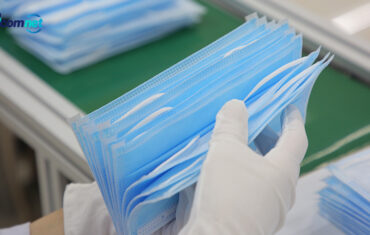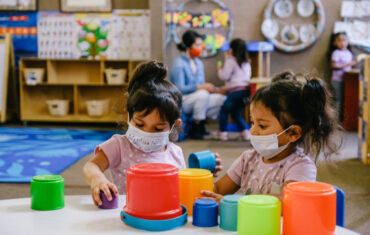During Covid 19 pandemic, there’s a lot of uncertainty about how schools will eventually return to in-person instruction. But in many places, teachers will likely be encouraged or required to wear face masks.
The CDC has recommended that all school employees wear face masks. And many school and district leaders are incorporating that guidance into their reopening plans. Some states, including California and Texas, are providing millions of masks for teachers when school buildings reopen. Experts say that wearing face masks can help prevent transmission of the coronavirus when an infected person coughs, sneezes, or talks.
While teachers say they understand the safety rationale, the prospect of wearing face mask while teaching still feels daunting for many. Will it be comfortable to teach for up to eight hours in a mask? How will wearing a mask affect instruction, especially for young children and English-language learners? Will a face covering make it difficult to form relationships with a new group of students?
Learning Language
Certain groups of students will be more heavily affected by not being able to see their teachers’ faces. Experts say students who are deaf, hard of hearing, or who have autism benefit from seeing facial expressions.
Also, English-language learners tend to watch their teachers’ mouths closely to distinguish between words or sounds that are similar, said Heidi Faust, the director of learning and engagement for TESOL International Association. It is more difficult during pronunciation lessons, when students need to see the position of the tongue and lips. Therefore, some teachers are considering to use face shields instead of face masks.
Face masks compare with face shields
Not all schools will require their teachers to wear masks while teaching. In Hawaii, the state’s health department has recommended that students and teachers wear face masks outside of the classroom. This can be in hallways or common areas.
In other places, teachers will be wearing clear face shields, which cover the entire face. The Children’s Hospital of Philadelphia recommended that teachers wear face shields in its guide for school reopenings. The Illinois State Board of Education noted in its guidance that shields would better allow teachers to convey facial cues to their students. The Texas Education Agency is providing 1 million face shields to school staff. And the California Department of Public Health is providing 2.4 million face shields for teachers and childcare providers.
Experts say the benefits of face shields are that they protect the entire face, including the eyes, and they are easy to clean and disinfect. However, there have been no large-scale studies that measure the effectiveness of face masks versus face shields in preventing transmission of the coronavirus. And unlike with face masks, which are proven to help protect others when an infected person wears one, there’s no research on how well face shields can contain an infected person’s viral transmission.
Some public health professionals have recommended that people should wear face shields in conjunction with face masks. Meanwhile, the CDC’s guidance for schools did not mention face shields, which are also more expensive for districts to buy in bulk than cloth or disposable masks.






